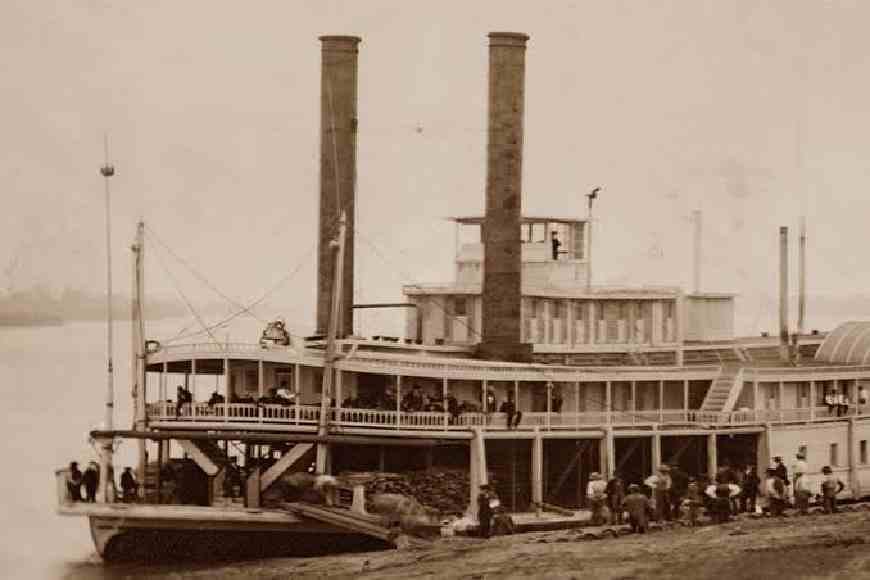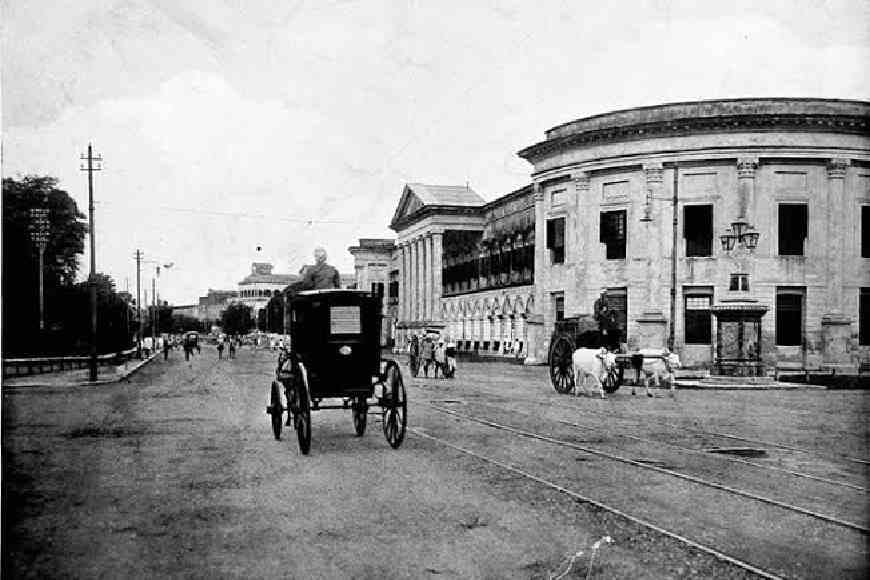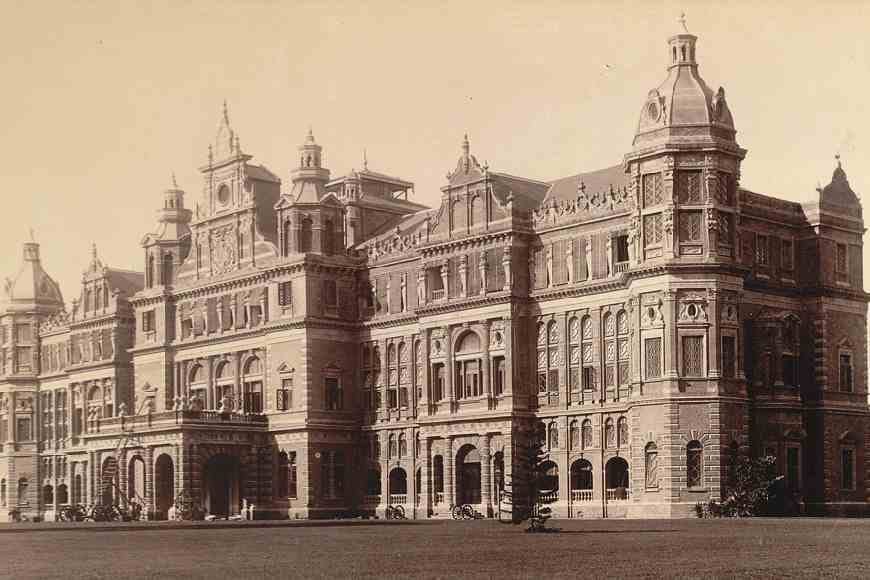Steamer service from Calcutta that transformed British Rangoon

The British East India Company was making considerable profits in Calcutta in the early 1850s. Calcutta was still being controlled by the company and did not require the troops from the British administration. The profits made by the British often lured others from other foreign nations as well as from India to look for similar opportunities to obtain wealth out of the minefield that Calcutta used to be.
A thriving community of Scots were trying to get hold of the opportunities that presented themselves with the expansion of the British Empire. Two school friends, William Mackinnon and Robert Mackenzie, who were from the Argyll County in Western Scotland, had moved to India in the 1840s and settled in the Scottish community of Bengal. Taking advantage of the trade facilities, they started selling their merchandise in the ports of Bay of Bengal and this gave rise to the Mackinnon, Mackenzie & Co. After the British annexed lower Burma in 1853, the duo saw an opportunity that would change the whole scenario in which the people and goods travelled around the world. They were just in their early 30s and a new door opened in front of them which paved the way for them to expand their company into a multinational empire.
Within two years of the low-lying areas of the Irrawaddy Delta and coastal regions of southern Burma becoming British territories, the East India Company invited tenders for a regular mail steamship between Calcutta and Rangoon. The bid was won by Mackinnon and Mackenzie who founded the Calcutta and Burma Steam Navigation Company, the predecessor of the British India Steam Navigation Company.
Two ships of the Calcutta and Burma Steam Navigation Company did fortnightly runs connecting Calcutta with Akyab, Rangoon and Moulmein. The Cape of Good Hope, a 500-tonne steamer, was the first ship to carry mail, goods and passengers from Calcutta to Rangoon. It started operations in 1856 and used to carry mails every two weeks. The first Indian War of Independence took place in 1857, which was successful in scaring the British. This eventually led the British East India Company to ask security aid from the British administration. It is after this incident that India officially came under direct British rule. The ship was used to transport British troops from Colombo to Calcutta. After the end of the war, another steamer named ‘Baltic’ of almost the same size joined the Cape of Good Hope on the Calcutta-Rangoon route. The profits started increasing with the increase in goods and passenger transport. Eight different ships began transporting goods and passengers, making Rangoon the second most important city in the subcontinent after Calcutta.
Rangoon became a centre for trade from a large rural village. The population in Rangoon increased in just 28 years. It was 30,000 when Lower Burma was annexed and the number later increased to one and a half lakh. The Calcutta and Burma Steam Navigation Company founded by Mackinnon was absorbed by the British India Steam Navigation Company in 1861. The British rulers favoured the company for their constant support during the 1857 war. Steamers often transported British troops from Calcutta and Rangoon and to the Andaman Islands. In the 1860s the company also transported troops as far away as New Zealand for the Maori War.
The shipping route was from Calcutta to Rangoon via Port Blair in Andaman and Kamorta (Nicobar Islands). A fortnightly steamer connected Calcutta to Penang and some ports in the Malay Straits such as Singapore via Rangoon. Burma became easier to access with such ease of transportation. Indians preferred Burma in the hope of finding better work opportunities. Until 1937, Burma was a part of British India, so travelling was even easier. According to the book ‘The Burma Delta: Economic Development and Social Change on an Asian Rice Frontier’ (1852-1941) by Michael Addas in 1881, 30% of Burma’s Indian population was Bengali. Clearly, the Bengalis did not miss the chance to hop on the trend, especially with new job vacancies.

According to Uma Shankar Singh’s research paper, 40 percent of Bengali immigrants to Burma were originally from Chittagong. The steamer used to stop at several small ports in present day Bangladesh before entering Burma from Cox’s Bazar. The steamer connecting Calcutta to Akyab used to stop at Chittagong, it was popular among the Bengali immigrants of Chittagong.
The steamer also started its services from Madras and Visakhapatnam as the demand for Indian immigrants increased. British rulers started subsidizing shipping companies to transport Indian immigrants to Burma. As a result, by the turn of the 19th century, about 50 percent of Rangoon’s population was Indians, many of whom were well-established in various parts of Burma. According to Addas, by the end of the 19th century, over 60 percent of Indian immigrants to Burma were from Madras.
Even after being hit by a recession, the British were making profits from the Rangoon-Calcutta shipping route. By 1930 there were 10 steamers running between the two cities a week. Steamers were known for their punctuality, as can be seen in the newspapers of that time. It took two days to travel from Calcutta to Rangoon, then return to Calcutta after loading and unloading the cargo in two and a half days. Britain and Burma had steamers as their main means of postal communication. Mail sent to Burma was sent by ship to Bombay (now Mumbai) and from there by train to Calcutta. The mails were sent to Diamond Harbour to be picked up by ferries bound for Rangoon. This system was in place until the Japanese invasion of Burma in 1942.

The steamer service was still very active even after India and Burma got independence, until the 1950s, when airmail started to be delivered from Britain to Burma. Yet, the exact time when the steamer service was discontinued is not known. In the 1958 film ‘Howrah Bridge’ starring Ashok Kumar and Madhubala, the two protagonists of the film travel from Rangoon to Calcutta. In a scene from the film, when Ashok Kumar is disembarking from a ship at Diamond Harbour, the ship bears the insignia of the British India Steam Navigation Company. This proves that the steamer service was running regularly till the end of the fifties. In 1962, the Burmese leader General Ne Win expelled more than 30,000 Indians, and the ferry services gradually ceased. The Indian government arranged special ferries and planes to evacuate these Indians. And thus, ended nearly a hundred years of the main means of communication between Bengal and Burma.









